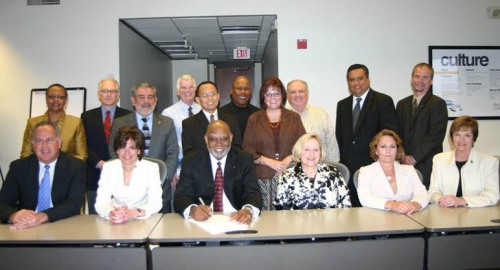by Blaine Collison, Program Director, Green Power Partnership, U.S. Environmental Protection Agency
(This article appears in the June, 2010 issue of The ACUPCC Implementer)
The fundamental economic, environmental and security importance of dramatically increasing the United States’ portion of renewable electricity generation portfolio cannot be overstated. American colleges and universities have compelling and unique abilities to help drive this series of changes through immediate and concrete action; this is Tangible Action 5 of the American College & University Presidents’ Climate Commitment.
This article will review some of the key issues in voluntary green power purchasing, touch on best practices, and briefly consider the enormous potential impact colleges and universities can have on the development of U.S. renewable energy.
Ninety-six colleges and universities are participating in the United States Environmental Protection Agency’s (EPA) Green Power Partnership (GPP), a voluntary program that offers technical support, best practices, and communications resources. The schools are purchasing almost 1.5 billion kWh of green electricity. All told, the GPP includes more than 1,200 organizations which are collectively buying almost 17 billion kWh of green power annually.
U.S. Voluntary Market Sales
Read more



 College and university presidents are stepping up to provide leadership on national transportation policy through Second Nature’s 15-member task force, which just released its
College and university presidents are stepping up to provide leadership on national transportation policy through Second Nature’s 15-member task force, which just released its College and university students across the world - but particularly those in the US, China, and India - are gearing up for some friendly competition to save the world.
College and university students across the world - but particularly those in the US, China, and India - are gearing up for some friendly competition to save the world. Four groups -
Four groups - 
 Later on this year, teams will earn points by implementing projects that promote clean energy and reduce greenhouse gas emissions. This is a critical year for ramping up action to avoid the worst impacts of climate disruption, so get involved - and good luck!
Later on this year, teams will earn points by implementing projects that promote clean energy and reduce greenhouse gas emissions. This is a critical year for ramping up action to avoid the worst impacts of climate disruption, so get involved - and good luck!

